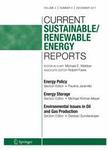版权所有:内蒙古大学图书馆 技术提供:维普资讯• 智图
内蒙古自治区呼和浩特市赛罕区大学西街235号 邮编: 010021

作者机构:Civil and Environmental Engineering Carnegie Mellon University PittsburghPA United States Engineering and Public Policy Carnegie Mellon University PittsburghPA United States Heinz College Carnegie Mellon University PittsburghPA United States
出 版 物:《Current Sustainable/Renewable Energy Reports》 (Curr. Sustain. Renew. Energy. Rep.)
年 卷 期:2025年第12卷第1期
页 面:1-10页
核心收录:
学科分类:080703[工学-动力机械及工程] 08[工学] 0807[工学-动力工程及工程热物理]
基 金:This work is funded in part by the National Science Foundation [grant numbers: 2121730 2315029], and by the Alfred P. Sloan Foundation.Open Access funding provided by Carnegie Mellon University
主 题:Analytical tools Energy planning Energy poverty Social justice Transportation poverty
摘 要:Purpose of Review: Energy poverty can fall into two broad categories: residential energy poverty and transportation energy poverty. While metrics exist to assess equity for each type of deficit individually, they often fail to account for interactions between the two sectors. This review focuses on poverty analyses within and at the intersection of the energy and transportation sectors. Recent Findings: In recent years, there has been movement toward crafting metrics that account for the multidimensional nature of poverty. While these metrics allow for nuance, they can present issues around quality data access, pose challenges for comparison across national or regional contexts, and introduce bias by weighting schemas. Despite the challenges associated with composite-factor metrics, we argue that future studies should focus on developing energy deficits metrics that operate at the nexus of transportation and residential-based energy deficits, to consider the complex ways in which households’ energy consumption patterns are linked across dimensions. Summary: This paper provides a literature review of 39 papers focused primarily on developed countries (e.g., Europe and North America), we classify transportation and energy deficit metrics as having single-factor inputs (e.g., only income) or composite-factor inputs (e.g., income and housing cost). We also classify metrics based upon the type of factors included in the model: income-based factors versus energy usage-based factors. © The Author(s) 2025.